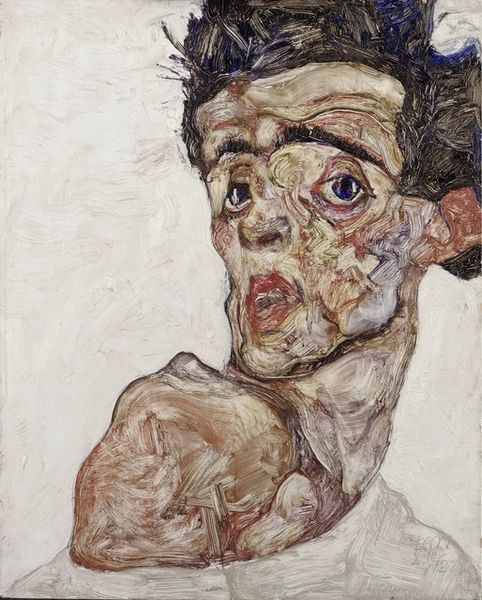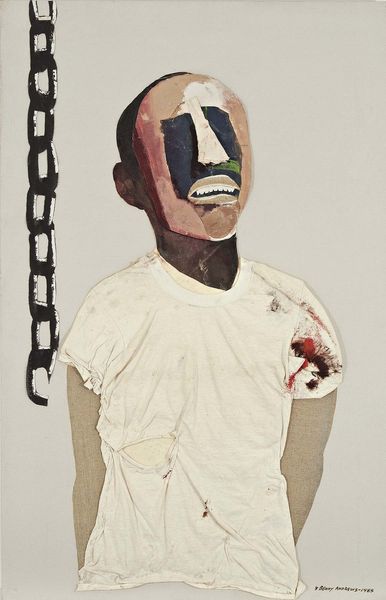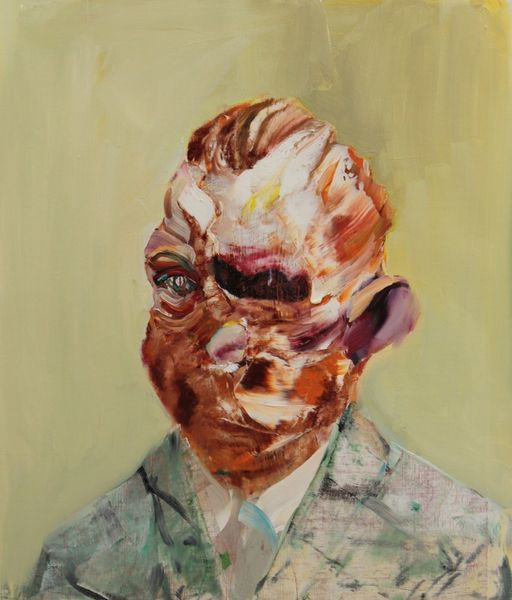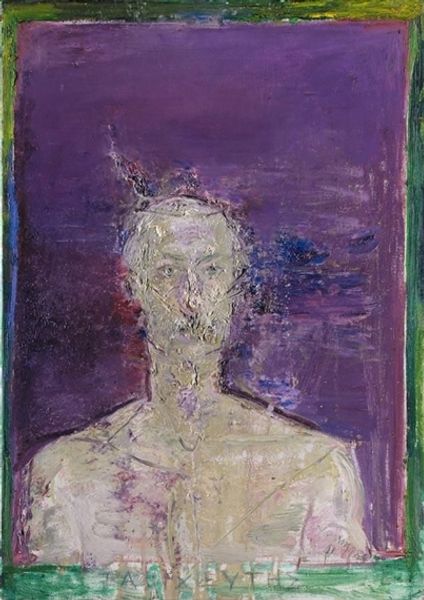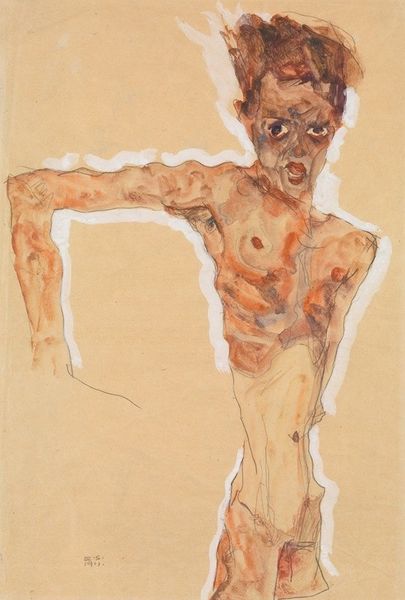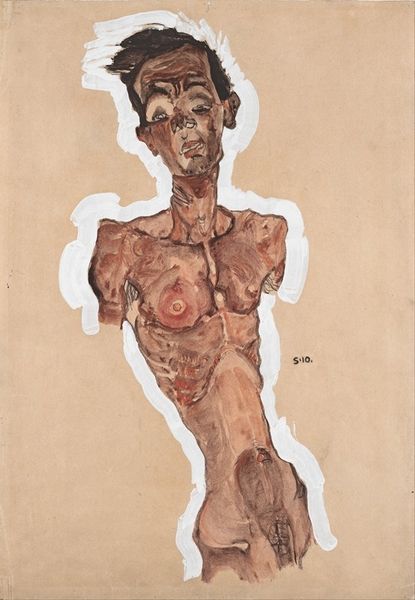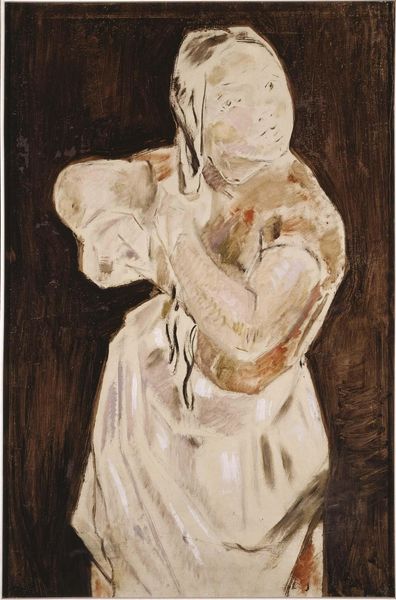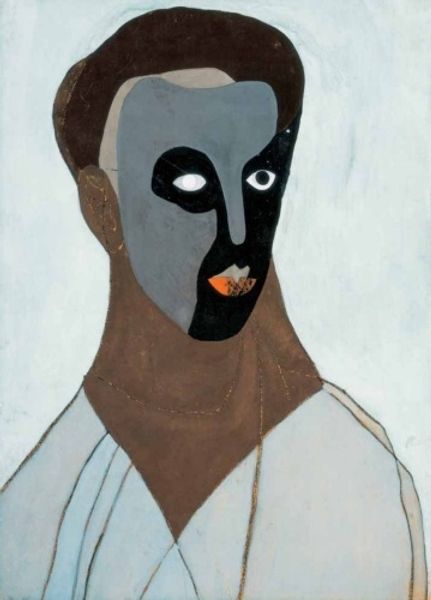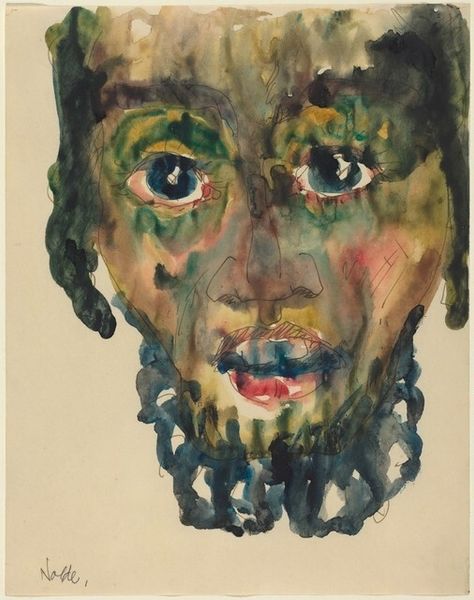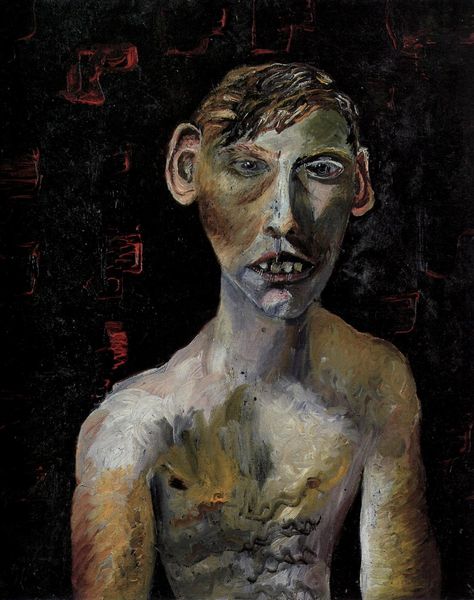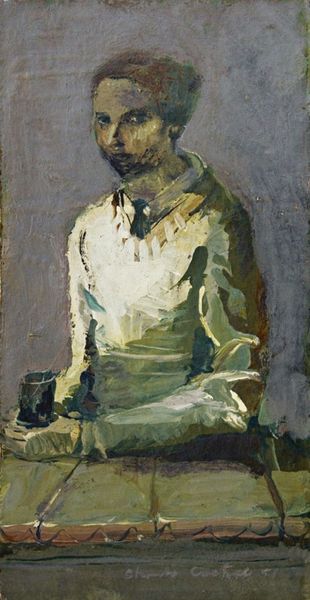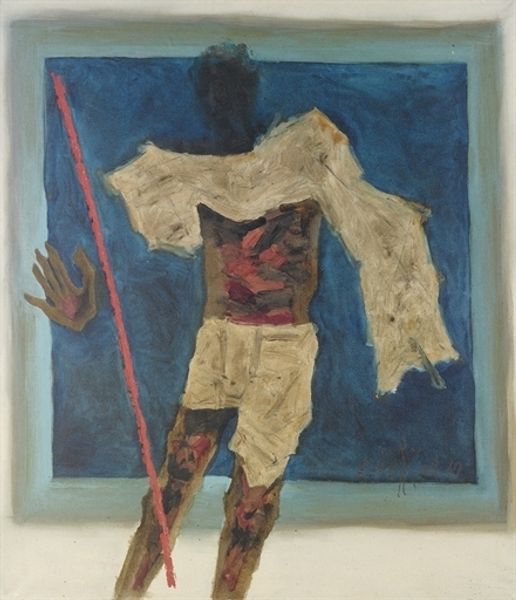
oil-paint
#
portrait
#
figurative
#
self-portrait
#
oil-paint
#
oil painting
#
portrait head and shoulder
#
expressionism
#
portrait drawing
#
portrait art
Copyright: Public Domain: Artvee
Curator: Egon Schiele painted this self-portrait in 1912. It's an oil on canvas, and it’s known as "Self-Portrait With Lowered Head." Editor: Immediately, I feel the weight. The slump of his shoulders, the almost skeletal hands… he’s bearing a heavy load, emotionally or perhaps physically. What's striking is the immediacy, a raw honesty, like catching a glimpse of his private pain. Curator: The context surrounding Schiele’s work at this time is vital to understanding that perceived 'pain.' Expressionism, particularly in Vienna, involved a focus on the artist's inner turmoil, alienation, and anxieties related to societal upheaval. Schiele was very invested in ideas about transgression. He portrays himself not simply as an individual, but as a figure embodying psychic vulnerability within a changing world. Editor: That tracks. I mean, look at the angularity, the almost aggressive lines of his face. It's like he's clawing at himself from the inside. And those eyes! Piercing, yet somehow defeated. It’s as though he’s both defiant and desperately searching for something, or someone. There is nothing classical about this, nothing restrained, just raw, barely controlled feeling spilling onto the canvas. Curator: The deliberately crude and unflattering portrayal flies in the face of traditional self-portraiture which seeks to memorialize or ennoble the sitter. We need to account for how the art-historical construction of the “artist as genius” relied upon specific notions of gender and class. Schiele here refuses idealization, interrogating those established hierarchies of representation. Editor: Absolutely. And for me, it's not just intellectual. It’s visceral. It's that slight tilt of the head, the blood-red details in the hands that draws me in, that makes me empathize. He doesn't let you off the hook; you’re forced to meet his gaze. And that’s why, beyond art-historical considerations, the work endures—it’s a fearless act of self-revelation. Curator: Ultimately, I view Schiele’s radical expressionism as crucial within discussions about gender, sexuality, and psychological identity. It becomes a visual articulation of individual suffering amidst restrictive social norms. Editor: For me, it’s a testament to art’s power to confront the things we often try to bury, the darker sides of ourselves. And a reminder that we’re never truly alone in our struggles.
Comments
No comments
Be the first to comment and join the conversation on the ultimate creative platform.
